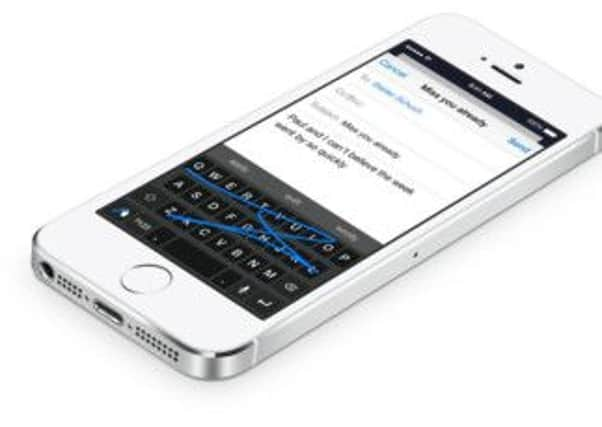Revolutionise the way you type on your phone


It survived the transition to computers a generation ago because it was believed that disoriented typists would welcome the familiar pattern of the keys. But as long as there have been keyboards there have been people in corners working on alternatives, and today is no exception. The latest latest ideas in the drive to develop one fit for the 21st century focus less on the keys, however, and more on the way your fingers interact with them.
The big development on phones this year - not just new ones but the one already in your pocket - is the introduction of keyboards that do not require you to lift your digit each time you hit a key. Instead, you drag your finger in a continuous sweep from one key to the next, as the inbuilt dictionary tries to guess the word or phrase you have in mind. This works surprisingly well, with a visible “trail” appearing on the keyboard as you swipe your finger, and in many cases your intended word appearing as a bubble before you’ve even finished entering it. Many users, myself included, find that once sampled, there’s no turning back.
Advertisement
Hide AdAdvertisement
Hide AdOwners of Android phones and tablets can try out Google’s swiping keyboard now, as a free upgrade to the standard issue model. It will have installed itself already on some devices, including Google’s Nexus tablet; for others it’s available from the Play Store - but once you’ve downloaded it you will need to follow some rather confusing instructions on how to activate it. Other swipe keyboards are also available, and have been for some time, so Google’s entry to the fray is somewhat belated - but its implementation leaves most of the others standing.
Apple’s adoption is even more belated, with users having to wait for the release of the company’s next generation operating system, iOS8, probably next month. As well as swiping, this brings with it a host of other keyboard enhancements, including “artificial intelligence” claimed to be able to predict the word you’re currently typing and the next one, too - and which can adjust the formality of its language according to the type of document you’re writing and the person with whom you’re corresponding.
Apple, unlike Google, has traditionally kept its mobile keyboard “locked down” with no opportunity for third-party developers to improve it - but that changes with iOS8, so the coming months will see a slew of independently-developed alternatives from people in virtual corners of the internet. Owners of most iPhones and iPads will get free upgrades during the autumn.
Swiping instead of typing potentially not only reduces the chances of incurring repetitive strain injury but may also help kill off the dreadful practice of using a different language entirely when sending texts. How Gr8 is that?